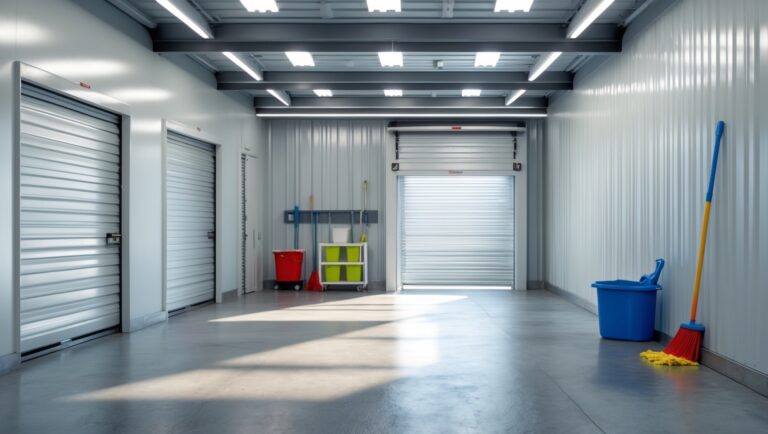Moving Truck Safety: Essential Checklist Before Hitting the Road
Introduction: Why Moving Truck Safety Matters
Moving day can be stressful, but few things derail plans faster than a moving truck breakdown or accident. Whether you’re a professional mover or tackling a DIY relocation, ensuring your moving truck is safe before you hit the road is crucial. A comprehensive pre-trip safety checklist can prevent unexpected delays, damage to your belongings, and even injuries. Moving trucks are larger, heavier, and handle much differently than personal vehicles. Their unique design and cargo loads demand extra diligence. Overlooking essential safety steps can lead to costly consequences, from breakdowns on busy highways to liability for accidents or damaged property. In this article, we’ll walk you through a detailed, step-by-step checklist to ensure your moving truck is road-ready. We’ll cover what to inspect, why it matters, and practical tips for a safe, smooth move—whether you’re driving across town or cross-country. Let’s make sure your move starts and ends on the right (and safe) foot!
Pre-Trip Inspection: The Foundation of Truck Safety
1. Exterior Walkaround
- Tires: Check for proper inflation using a gauge, visible damage, excessive wear, or bulges. Low or overinflated tires can lead to blowouts, especially under heavy loads.
- Lights & Signals: Test headlights (high/low beams), brake lights, reverse lights, and turn signals. Malfunctioning lights are a leading cause of moving truck accidents and tickets.
- Mirrors: Clean all exterior mirrors and adjust them for optimal visibility. Ensure there are no cracks or loose fittings.
- Windshield & Wipers: Inspect for cracks, chips, or obstructions. Test wipers and ensure the reservoir is filled with washer fluid.
- Doors & Latches: Confirm all doors, including cargo doors, open and close smoothly and latch securely. Broken latches can result in cargo loss.
- License Plates & Registration: Verify that plates are present, clean, and registration is up-to-date and accessible.
2. Under the Hood
- Oil Level: Use the dipstick to check oil. Top up if needed, following the manufacturer’s guidelines.
- Coolant: Inspect coolant levels and look for leaks under the vehicle.
- Brake Fluid: Essential for stopping power—ensure the reservoir is between the minimum and maximum marks.
- Transmission Fluid: If accessible, check its level and color.
- Leaks: Look underneath for any puddles or drips—oil, coolant, or fuel leaks demand immediate attention.
3. Interior Checks
- Dashboard Lights: Turn the ignition and confirm all warning lights illuminate, then go off. Any persistent warning indicates a problem.
- Gauges: Ensure speedometer, fuel gauge, and temperature gauge work properly.
- Horn: Test for loud, clear sound—vital for alerting others in emergencies.
- Seatbelts: All belts should pull out smoothly and retract fully. Latches must click securely.
- Parking Brake: Engage and release to confirm it holds the vehicle in place.
- Climate Controls: Test heat, AC, and defroster. Fogging windows reduce visibility and increase accident risk.
Securing Your Load: Cargo Safety Essentials
1. Proper Packing Techniques
Improperly loaded cargo can shift, causing loss of control, damage, or injury. Always:
- Distribute weight evenly across the truck bed.
- Place heavier items on the bottom and towards the front (near the cab).
- Use moving pads and blankets to cushion delicate items.
2. Restraints and Tie-Downs
- Secure items using high-quality ratchet straps or rope.
- Double-check that nothing can roll, slide, or topple during transit.
- Use anchor points provided inside the truck for maximum stability.
- Test the security by gently rocking larger items before closing the doors.
3. Cargo Door Safety
- Ensure doors close completely and lock.
- Check the integrity of door seals to prevent water or dust intrusion.
- Never drive with cargo doors partially open, even for short distances.
Critical Systems: Brakes, Steering, and Suspension
1. Brake Test
- With the engine running, press the brake pedal firmly—it should feel firm, not spongy or soft.
- Listen for unusual noises (squeals, grinding) during a short, slow test drive in the lot.
- Check for any pulling to one side when braking, indicating uneven wear or a hydraulic issue.
2. Steering and Handling
- Turn the wheel fully left and right to check for smooth motion and no excessive play.
- Notice any vibrations or clunks during movement, which could signify worn components.
- During your test drive, the truck should track straight without constant steering correction.
3. Suspension
- Visually inspect for sagging, leaks (shock absorbers), or broken leaf springs.
- Push down on each corner of the vehicle—excessive bouncing may indicate worn shocks.
Emergency Preparedness: What to Pack
1. Emergency Kit Essentials
- First Aid Kit: Stocked with bandages, antiseptic, pain relievers, and basic medical supplies.
- Reflective Triangles/Flares: For roadside breakdowns or accidents.
- Fire Extinguisher: Rated for automotive use and within reach.
- Flashlight & Spare Batteries: Nighttime emergencies require reliable lighting.
- Basic Tools: Screwdrivers, pliers, adjustable wrench, and duct tape.
- Jumper Cables: In case of battery failure.
- Spare Tire & Jack: Confirm the location and that all parts are functional.
- Gloves & Rain Poncho: For safe, comfortable roadside repairs.
2. Important Paperwork
- Rental agreement or proof of ownership
- Insurance documents
- Driver’s license (ensure it’s valid for the vehicle size/class)
- Emergency contact numbers
- Roadside assistance plan details (if applicable)
Driving Safety: On the Road Best Practices
1. Adjusting to a Larger Vehicle
- Take time to familiarize yourself with the truck’s controls and blind spots before merging into traffic.
- Allow extra space for turns—moving trucks need more room, especially for right turns.
- Be aware of height and weight restrictions—know your vehicle’s dimensions before entering parking garages or underpasses.
2. Safe Following Distance
- Maintain at least a four-second gap between your truck and the vehicle ahead. Heavier vehicles require longer stopping distances.
- Increase following distance in rain, fog, or low visibility conditions.
3. Parking and Loading Zones
- Scout parking spots in advance. Many residential streets can’t accommodate longer trucks.
- Use wheel chocks when parked on an incline to prevent rolling.
- Never leave the vehicle unattended with the engine running or keys inside.
4. Handling Emergencies
- In the event of a breakdown, move the vehicle to a safe location, set up reflective triangles, and contact roadside assistance.
- Remain calm and keep passengers safe while waiting for help.
- Document any accidents or cargo damage with photos for insurance claims.
Final Pre-Departure Checklist: Quick Reference
- Walk around the truck one last time, checking for loose items or leaks.
- Test all lights and signals again.
- Verify tire condition and pressure.
- Check that mirrors are clean and properly adjusted.
- Confirm all cargo is secured and doors are locked.
- Ensure emergency kit and paperwork are accessible.
- Buckle seatbelts before starting the engine.
Conclusion: Safety is the Best Moving Strategy
Moving day presents enough challenges without the added stress of preventable breakdowns or accidents. Diligently following a moving truck safety checklist sets the stage for a smooth, secure relocation. From inspecting tires and brakes to double-checking cargo restraints and preparing an emergency kit, these steps safeguard not just your belongings, but the well-being of everyone involved. Even seasoned movers can overlook crucial details when pressed for time, so never underestimate the value of a systematic approach. Remember, the cost of a few extra minutes spent on safety checks is minimal compared to the potential financial, emotional, and legal fallout of an on-the-road incident. By implementing these practical tips, you can drive away with confidence, knowing you’ve minimized risks and protected your investment. Whether you’re handling a simple local move or embarking on a long-distance journey, safety is always the best moving strategy. Wishing you a smooth, trouble-free move—and many happy memories in your new space!





